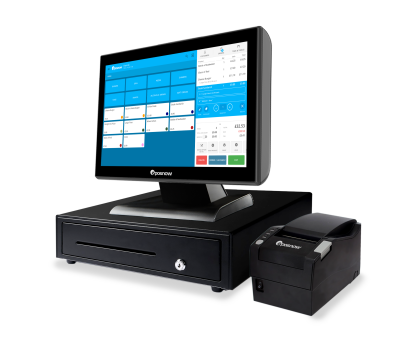Hotel Pricing Strategy: Building the Right Pricing Strategy for You
Besides offering a well-appointed place for travelers to lay their heads, the main goal of any hotel should be to boost occupancy and maximize profit. The hotel industry is a fickle business and it can be difficult to consistently attract enough guests to fill your hotel rooms.
Providing comfortable hotel rooms is one thing, being a hospitality industry success is another thing entirely.
Hotel pricing strategy is a sometimes overlooked aspect of hotel management. Some hotels are content to set their prices and adjust them as the seasons change, never paying too much heed to changing tastes and budgets. While this may work for some, these hotels are missing out on a major source of income.
With the right hotel pricing strategy, you can keep your room rates competitive but still profitable. In this blog, we'll be exploring hotel pricing strategy in-depth, taking a look at different pricing strategies, and discussing how you can apply them to your own hotel.
What is a hotel room pricing strategy?
In basic terms, a hotel room pricing strategy is the rate charged per room by a hotel. A good pricing strategy uses information from multiple sources (expected occupancy, competitor prices, etc.) to ensure that each room is boosting hotel revenue and providing maximum profit.
When developing a pricing strategy, hoteliers need to be aware of a few different key factors. Hotel owners need to walk the line between providing competitive rates without undervaluing their offerings. Unless there are extreme extenuating circumstances, you should never price hotel rooms too high above market rates or too low below them. They must also consider the services they have available and their competitors' room rates.
It can be prudent, especially in high market demand areas, to have a variety of different prices and rooms available. This widens the pool of potential guests and allows hotels to serve different audiences. These rooms can even be advertised in different ways via social media, online travel agents, and booking websites. This dynamic pricing strategy can bring in more revenue and encourage guests to check back for different prices.
Why do pricing strategies matter?
Effective hotel pricing strategies are integral to continued success. Hotel pricing strategies allow hoteliers to be directly involved in revenue management and give them the tools they need to run their businesses effectively. Trends in the hotel industry can change quickly and solid pricing strategies give hoteliers a sturdy base that they can work from.
Building a hotel room pricing strategy
At first glance, implementing effective pricing strategies in your business might seem simple. Surely all you need to do is cover all your overheads and make a little profit, right?
This isn't the case. Creating a truly successful hotel room pricing strategy takes work and time. Hotel prices are constantly fluctuating and staying on top of all the costs and considerations needs attention and adjustment.
To help hoteliers build an effective hotel pricing strategy, we've put together a list of strategies used by hotels to price their rooms. Depending on the hotel, these pricing strategies can work by themselves or be combined to cover multiple different aspects of hotel pricing.
Competitor-based pricing
The hotel industry is populated by thousands of businesses across the world all competing for attention. In a local market where all the hotels operate at the same level of quality service, a potential guest's reason for choosing where they will stay often comes down to room prices. All hotels will have their own different pricing methods.
Hoteliers using competitor-based pricing gather market intelligence and use that to inform their prices. All hotels in a local market compare their prices and base their room rates on that information. Historical data, contemporary prices, and how competitors handle discounts all come into the room rate equation with competitor-based pricing.
While most hoteliers will adjust their prices to be lower than their competitors, there is an argument for raising prices in certain circumstances. Higher prices create an illusion of luxury and exclusivity. This means that some guests will choose a more expensive hotel as a status symbol.
Forecasting-based pricing
While it's impossible to see the future, it's sensible to plan for it. Forecast-based pricing is a strategy that uses historical data to predict your busy periods and your slow periods. To properly use this pricing strategy, you must have a solid grasp of your data, going back years. These data points should include your occupancy rate, revenue, usual room rate, and your revenue per room.
These data points will give you guidance on your future pricing strategy. Forecasting-based pricing allows you to adjust your room rates to be in line with your expected occupancy and price. When using this pricing strategy, it's important to consider the current popularity of your local market and how that will play into demand.

Gain all the advantages of a POS system with detailed, flexible, downloadable reports, and so much more:
- Manage and update products quickly with easy-to-use software
- Expand your business into multiple channels and integrate with a variety of online platforms
- Manage multiple locations and salespoints with multi-site management
- Keep queues short with streamlined, modifiable sales processes
- Choose a setup that suits you with software and hardware options
Length-of-stay strategy
As with forecast-based pricing, length-of-stay uses historical data to help you set current room rates. This strategy uses the average amount of time your guest generally stay at your hotel compared to their arrival date to work out how much revenue they will bring in. By comparing guests' arrival dates and length of stay, you can predict how many rooms will be filled at any one time. Once you have that information, you can set hotel room rates based on the expected supply and demand of your rooms.
Be aware that as hotel management, you can set a minimum length of stay for your guests. By doing this, you can ensure that rooms are more readily available in times of high demand and occupied in slower periods. In some cases, more popular destinations will provide maximum room revenue.
Segment-based pricing
In the segment hotel pricing strategy, different guests are charged different prices for the same room. While this may sound unfair, it's perfectly legitimate pricing strategy used in both the airline and hotel industries. When used correctly, this can have a huge impact on hotel revenue and offer your guest competitive prices.
Segment-based pricing uses a variety of information to give optimal pricing to your guests. This includes guest information such as how many rooms your guests book, the time they made the booking, length of stay, and (if available) amenities such as spa or restaurant incentives. Depending on the needs and wants of the guest, you can adjust room pricing to maximize revenue.
Occupancy-based pricing
The main goal of a hotel is to keep a healthy room occupancy rate while also maintaining optimal pricing. Occupancy-based pricing is a common pricing strategy in the hotel industry that handles both. It's also one of the simplest pricing strategies used by hotels and so it can be implemented quickly and easily.
In essence, this pricing strategy operates on simple supply and demand. When hotel room demand exceeds supply, you raise the hotel room rate. Conversely, when supply outstrips demand, you lower the hotel room rate. This is one of the most effective pricing strategies as it balances hotel revenue against customer service in a way that works for both parties.
Incentive-based pricing
Anything you can do to increase occupancy and attract repeat guests is good for your business. Incentive-based pricing works by increasing room rates while offering your guests additional services. By offering an expanded suite of services, you can attract repeat guests and more revenue.
There are a variety of different incentives you can offer to your guests. Hotel owners can create packages that come with incentives like discount codes or promotions on rooms. These codes can be sent out via social media or over email. If you have a spa or restaurant, you could offer repeat guests free meals or treatments. Take care to ensure that the hotel room rate still brings in a profit after you offer these incentives.
Loyalty-based pricing
Similar to incentive pricing, loyalty-based pricing strategies use loyalty programs to encourage repeat guests. Hotel loyalty programs are cheap and effective and can be used in conjunction with other promotions to bring guests back into the hotel room.
If a guest feels like they have a relationship with the hotel, they're much more likely to stay with you again, no matter how much you raise or lower the room rates.
The idea behind loyalty pricing strategies is simple. By encouraging guests to sign up for a loyalty program, you encourage them to become repeat customers that make more direct bookings so that they can access the benefits of the program. Any discount pricing that you offer through the program will be offset by revenue brought in by direct bookings and repeat guests.
Price hotel rooms perfectly with powerful POS
Hotel room pricing strategies are useful tools that help hotel and revenue managers run their businesses more effectively. Another helpful tool is the Epos Now Complete Solution, a point of sale (POS) system designed with the hospitality industry in mind.
If you're interested in hearing more about Epos Now, get in touch with our expert team below.




